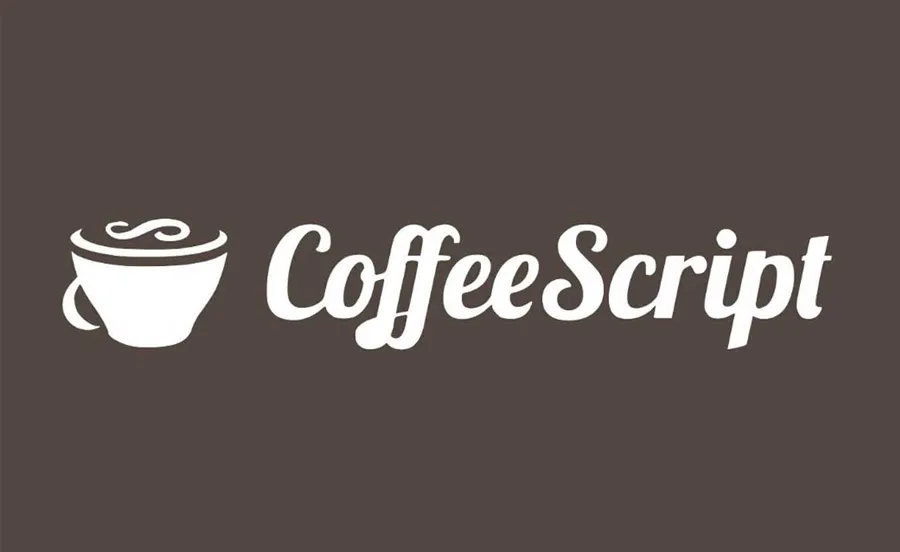Want to hire CoffeeScript developer? Then you should know!
- What’s CoffeeScript All About?
- What CoffeeScript Developers Can Do For You
- Who Are Our CoffeeScript Developers?
- How to Tell If a CoffeeScript Dev’s Got the Goods
- CoffeeScript Tech in 2025 and Beyond
- TOP 10 CoffeeScript Related Technologies
- How and where is CoffeeScript used?
- TOP 12 Facts about CoffeeScript
- TOP 12 Tech facts and history of creation and versions about CoffeeScript Development
What’s CoffeeScript All About?

In 2015, the advent of ES6 brought with it one of the largest revolutions in the world of JavaScript. It presented a lot of new functionalities — and thus new possibilities: arrow functions, classes, inheritance, defining variables using let, and much more. However, were they really such new solutions for a language like JS?
Well, in 2009 Jeremy Ashkenas (now a writer for the New York Times) came up with a rather interesting idea. His idea would embellish and increase the readability of, in some cases, quite complicated JavaScript code. Drawing inspiration from Python and Ruby, Ashkenas created a programming language that compiles into JavaScript called CoffeeScript.
What CoffeeScript Developers Can Do For You
Our CoffeeScript devs are handy in a bunch of spots. If you’ve got an old Rails app, they’ll keep its front-end ticking with CoffeeScript views that load fast. For startups, they can whip up prototypes quick—think dashboards or forms—without drowning in JS boilerplate. They’re also great for teams stuck with legacy code, tightening up scripts or adding features without a full rewrite. It’s a fit wherever you want JavaScript development that’s lean and maintainable.
Who Are Our CoffeeScript Developers?
Our CoffeeScript crowd’s a mix—some kicked off with web dev basics, others slid over from Ruby or Python gigs. They’re rock-solid with JavaScript (since that’s where CoffeeScript ends up) and usually comfy with frameworks like Rails or Node.js. A lot have tackled front-end projects or maintained older stacks where CoffeeScript was the go-to. They’re the type who’ve spent hours unraveling a compiled JS bug and still kept their cool.
How to Tell If a CoffeeScript Dev’s Got the Goods
Want to know if a CoffeeScript dev’s up to snuff? Ask what they’ve touched—have they cleaned up a Rails app’s views or built a tool with CoffeeScript from scratch? Look for ones who’ve wrestled with its quirks—like class syntax or fat arrows—and can show you the JS it spits out. Our devs might tell you about speeding up a sluggish page or syncing CoffeeScript with jQuery. If they’ve got stories of debugging a loop or tweaking a build script, they’ve got the real-deal experience.
CoffeeScript Tech in 2025 and Beyond
By March 2025, CoffeeScript’s still kicking—more of a trusty sidekick than a headliner. It’s not growing wild, but our developers see it holding steady for teams who love its style, especially in Rails shops or legacy upkeep. The latest 2.x version’s stable, and while it’s not chasing ES2025 features, it’s fine for what it does—clean JS output. Looking ahead, it might stick around as a niche pick for prototyping or small teams, though most new JavaScript development’s gone full TypeScript. Hiring a CoffeeScript dev now keeps your older projects tight while the web marches on—they’ll bridge the gap.
TOP 10 CoffeeScript Related Technologies

Languages: CoffeeScript
CoffeeScript is a programming language that compiles into JavaScript. It offers a cleaner syntax and reduces the amount of code needed to achieve the same functionality as JavaScript. CoffeeScript is widely used for web development and is compatible with all major web browsers.
Frameworks: AngularJS
AngularJS is a popular JavaScript framework that is often used in conjunction with CoffeeScript. It provides a powerful and intuitive way to build dynamic web applications. AngularJS offers features such as two-way data binding, dependency injection, and modular development, making it a preferred choice for CoffeeScript developers.
Frameworks: Backbone.js
Backbone.js is another widely used JavaScript framework that can be paired with CoffeeScript. It provides a lightweight structure for organizing code and simplifies the process of building single-page applications. Backbone.js is known for its flexibility and modularity, making it an ideal choice for CoffeeScript software development.
Task Runners: Grunt
Grunt is a JavaScript task runner that can be utilized in CoffeeScript development workflows. It automates repetitive tasks such as minification, compilation, and testing, saving developers valuable time. Grunt has a large ecosystem of plugins, making it highly customizable and adaptable to various project requirements.
Package Managers: npm
npm, short for Node Package Manager, is the default package manager for Node.js and can be used with CoffeeScript projects. It allows developers to easily install, manage, and share reusable code modules. npm provides access to a vast collection of open-source libraries and frameworks, streamlining the development process.
Build Tools: Webpack
Webpack is a popular module bundler that can be integrated into CoffeeScript development workflows. It helps manage dependencies, optimizes code, and bundles all necessary assets for deployment. Webpack offers features such as code splitting and lazy loading, enhancing the performance and efficiency of CoffeeScript applications.
Testing Frameworks: Jasmine
Jasmine is a behavior-driven development framework that can be used for testing CoffeeScript code. It provides an expressive syntax for writing test cases and offers a comprehensive set of assertions. Jasmine integrates well with CoffeeScript and enables developers to ensure the quality and reliability of their software.
How and where is CoffeeScript used?

| Case Name | Case Description |
|---|---|
| 1. Interactive Web Applications | CoffeeScript is widely used in the development of interactive web applications. Its concise syntax and powerful features make it easier and faster to write complex JavaScript code. CoffeeScript’s ability to compile into clean, readable JavaScript allows developers to create interactive user interfaces and dynamic web functionalities with ease. |
| 2. Single-Page Applications | Developers often choose CoffeeScript for building single-page applications (SPAs) due to its simplicity and enhanced readability. With CoffeeScript’s expressive syntax and features like comprehensions and function binding, developers can write concise and maintainable code for SPAs. CoffeeScript’s seamless integration with JavaScript frameworks like AngularJS and Ember.js further facilitates the development of robust SPAs. |
| 3. Server-Side Development | CoffeeScript is not limited to client-side development. It is also utilized for server-side development, thanks to its ability to run on the Node.js platform. CoffeeScript’s clean syntax and lightweight nature make it an excellent choice for building server-side applications and APIs. It allows developers to write server-side code in a more concise and readable manner, improving productivity and maintainability. |
| 4. Game Development | CoffeeScript finds applications in game development due to its simplicity and flexibility. Game developers leverage CoffeeScript’s features like classes, inheritance, and modules to create engaging and interactive games. With CoffeeScript’s clean and readable syntax, game developers can focus more on the game logic rather than getting caught up in complex JavaScript syntax. |
| 5. Mobile App Development | CoffeeScript is also used in mobile app development, particularly when building hybrid mobile apps using frameworks like Apache Cordova (formerly PhoneGap). CoffeeScript’s ability to transpile into JavaScript makes it compatible with various mobile platforms, allowing developers to write code once and deploy it across multiple devices. By using CoffeeScript, developers can write mobile app code in a more concise and maintainable manner. |
| 6. Prototyping and Rapid Development | CoffeeScript’s simplicity and expressiveness make it an ideal choice for prototyping and rapid development. Its concise syntax allows developers to quickly iterate and experiment with ideas without worrying about the complexities of JavaScript. CoffeeScript’s compiled JavaScript code retains readability, making it easier to refactor and enhance the prototype as it evolves into a production-ready application. |
| 7. Build Automation and Task Runners | CoffeeScript can be utilized in build automation and task runners to streamline development workflows. Developers can write build scripts or define tasks using CoffeeScript, leveraging its concise syntax and powerful features. By using CoffeeScript for build automation, developers can improve productivity, reduce manual errors, and automate repetitive tasks in their development process. |
| 8. Web Scraping and Data Extraction | CoffeeScript’s versatility extends to web scraping and data extraction tasks. With the help of libraries like Cheerio or Puppeteer, developers can use CoffeeScript to write scripts that navigate web pages, extract data, and perform various scraping operations. CoffeeScript’s expressive syntax and support for asynchronous programming make it a useful tool for automating web scraping tasks. |
| 9. Cross-Platform Desktop Applications | CoffeeScript, in combination with frameworks like Electron, allows developers to build cross-platform desktop applications. By leveraging CoffeeScript’s clean syntax and the powerful capabilities of Electron, developers can create desktop applications that run seamlessly on multiple operating systems. CoffeeScript’s ability to transpile into JavaScript ensures compatibility and ease of deployment across different platforms. |
| 10. Code Refactoring and Modernization | Existing JavaScript codebases can benefit from CoffeeScript’s code refactoring and modernization capabilities. CoffeeScript’s syntax is designed to be more readable and expressive, making it easier to refactor and improve existing JavaScript code. By transpiling JavaScript into CoffeeScript, developers can modernize legacy codebases, enhance maintainability, and leverage CoffeeScript’s features to write cleaner and more efficient code. |
TOP 12 Facts about CoffeeScript
- CoffeeScript is a programming language that compiles into JavaScript. It was created by Jeremy Ashkenas in 2009.
- The syntax of CoffeeScript is designed to be more concise and readable compared to JavaScript, aiming to increase developer productivity.
- CoffeeScript provides several syntactic sugar features, such as list comprehensions, destructuring assignments, and optional parentheses for function calls.
- One of the key goals of CoffeeScript is to reduce the amount of boilerplate code required in JavaScript.
- CoffeeScript supports both object-oriented and functional programming paradigms, making it versatile for different coding styles.
- Many popular frameworks, libraries, and applications have been written in CoffeeScript, including the Atom text editor, the Rails framework, and the Backbone.js library.
- The CoffeeScript compiler translates CoffeeScript code into readable and efficient JavaScript code, which can be executed by any JavaScript runtime environment.
- Since CoffeeScript is a superset of JavaScript, existing JavaScript code can be seamlessly integrated and used in CoffeeScript projects.
- CoffeeScript has a strong and active community of developers who contribute to its development, provide support, and share resources and best practices.
- Although CoffeeScript has gained popularity, its adoption rate is relatively lower compared to JavaScript, which remains the dominant programming language for web development.
- CoffeeScript encourages the use of whitespace and indentation for code organization, reducing the need for explicit curly braces and semicolons.
- The CoffeeScript compiler offers various options for customizing the output JavaScript code, allowing developers to optimize for different factors such as code size or execution speed.
TOP 12 Tech facts and history of creation and versions about CoffeeScript Development
- CoffeeScript is a programming language that compiles into JavaScript, providing a more concise and readable syntax.
- It was created in 2009 by Jeremy Ashkenas, who aimed to make JavaScript development more enjoyable and efficient.
- CoffeeScript introduced the concept of “comprehensions,” which allow developers to write more expressive and compact code for iteration and manipulation of arrays and objects.
- One of the key features of CoffeeScript is “fat arrow” functions, which automatically bind the “this” keyword to the surrounding context, avoiding potential confusion in JavaScript.
- The language gained popularity for its focus on readability and reducing code verbosity, leading to faster development and easier maintenance.
- It inspired other programming languages like TypeScript and Dart to adopt similar syntax and features.
- The first stable version of CoffeeScript, 1.0, was released in December 2010.
- CoffeeScript leverages JavaScript’s existing ecosystem and libraries, making it compatible with popular frameworks like Node.js and React.
- It provides syntactic sugar for common JavaScript patterns, such as classes, array slicing, and object destructuring, making the code more elegant and concise.
- CoffeeScript code can be seamlessly integrated into existing JavaScript projects, allowing developers to gradually adopt the language without rewriting everything.
- Several prominent web applications and frameworks, including GitHub, Shopify, and Rails, have adopted CoffeeScript for their development.
- The latest stable version of CoffeeScript, 2.5.1, was released in July 2019, ensuring ongoing support and improvements for the language.
- What’s CoffeeScript All About?
- What CoffeeScript Developers Can Do For You
- Who Are Our CoffeeScript Developers?
- How to Tell If a CoffeeScript Dev’s Got the Goods
- CoffeeScript Tech in 2025 and Beyond
- TOP 10 CoffeeScript Related Technologies
- How and where is CoffeeScript used?
- TOP 12 Facts about CoffeeScript
- TOP 12 Tech facts and history of creation and versions about CoffeeScript Development
Talk to Our Expert

